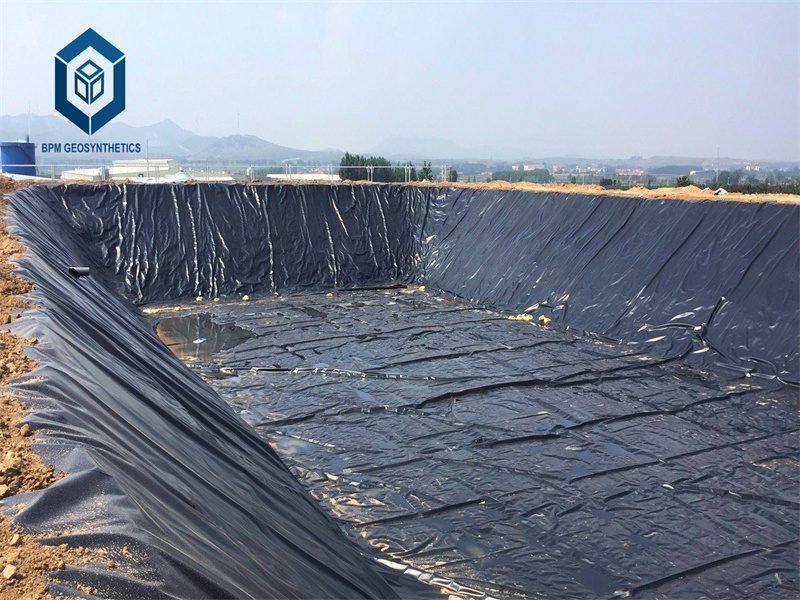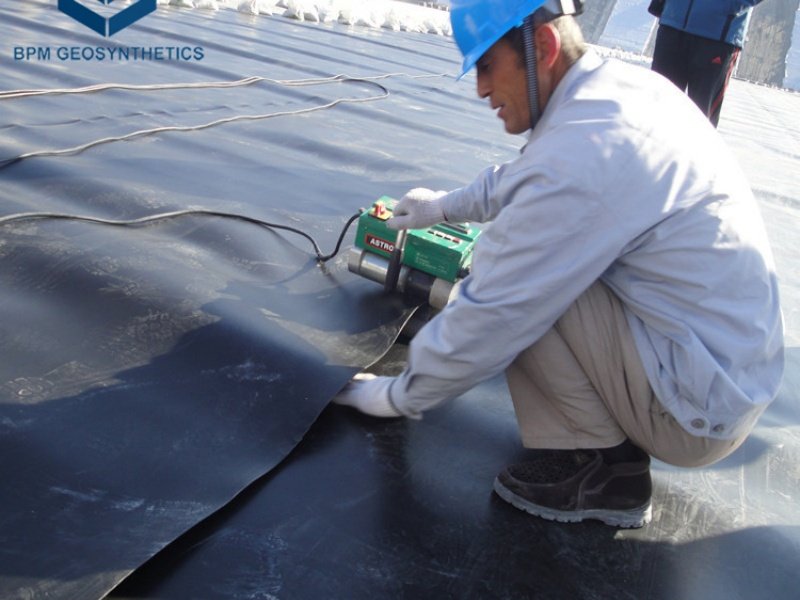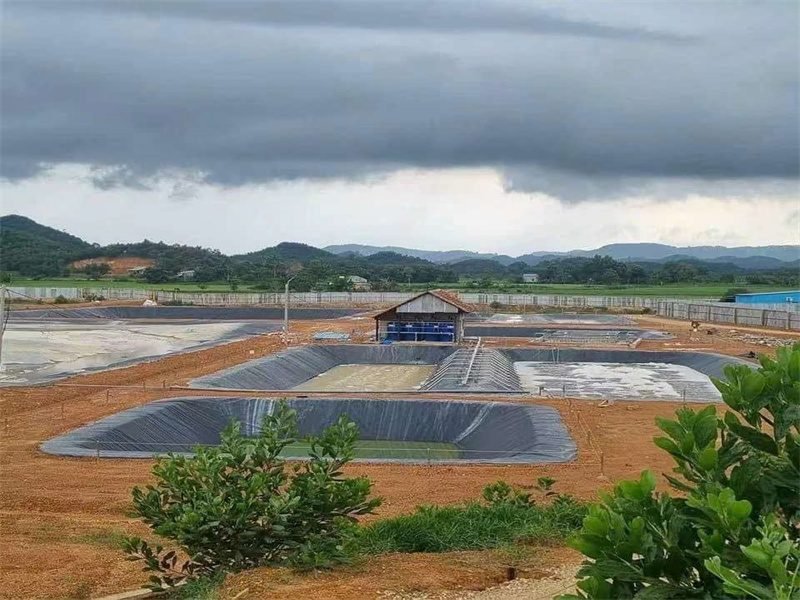Constructing a reliable containment system—whether for a pond, landfill, or industrial reservoir—demands a geomembrane that guarantees durability, impermeability, and environmental safety. The high density polyethylene geomembrane (HDPE geomembrane) emerges as a leading solution, celebrated for its exceptional strength, chemical resilience, and long service life. At BPM Geosynthetics, with over 15 years of experience supplying geomembranes to 80+ countries, we’ve seen the transformative impact of a high density polyethylene geomembrane in projects like a 300,000 m² aquaculture farm in Sri Lanka and wastewater lagoons in Thailand’s humid tropics.
This article offers a thorough roadmap, detailing its definition, functions, advantages, and selection criteria. Supported by technical specs—0.5mm–3.0mm thickness, 27 kN/m tensile strength (ASTM D6693)—and expertise from geomembrane manufacturers like BPM Geosynthetics, this guide empowers engineers, contractors, and pond owners with practical knowledge. Whether you’re partnering with a geomembrane factory or planning a large-scale deployment, we’ll navigate the process to help you select the high density polyethylene geomembrane that meets your project’s demands. Let’s explore this robust material and its vital role in modern containment solutions.

1. What Is a High Density Polyethylene Geomembrane?
A high density polyethylene geomembrane is a synthetic liner crafted from high-density polyethylene (HDPE) resin, engineered to block fluid and gas migration in geotechnical applications. Produced by geomembrane manufacturers using advanced extrusion techniques, this geomembrane is a staple in containment systems for ponds, landfills, mining operations, and wastewater management. Its high density (0.941–0.965 g/cm³) and crystalline structure deliver superior strength and resistance, setting it apart from alternatives like EPDM or PVC.
1.1 Material Specifications
- Thickness: 0.5mm–3.0mm (20–120 mil), adjustable to project needs (BPM Geomembrane).
- Tensile Strength: 27 kN/m (ASTM D6693), ensuring load-bearing capacity.
- Puncture Resistance: 640 N (ASTM D4833), suited for rugged environments.
- Roll Dimensions: Widths up to 10m, lengths up to 300m.
1.2 Manufacturing Process
In a geomembrane factory like BPM Geosynthetics, a high density polyethylene geomembrane is formed via flat-die cast or blown-film extrusion, blending HDPE with 2–2.5% carbon black, UV stabilizers, and antioxidants. This produces a smooth or textured finish—textured options enhance friction on slopes—while conductive layers enable leak detection (ASTM D7240). Heat-welded seams (13 kN/m strength, ASTM D6392) ensure a watertight seal, and its flexibility adapts to diverse contours.
1.3 Applications of High Density Polyethylene Geomembrane
The high density polyethylene geomembrane shines across applications: aquaculture ponds (e.g., 0.75mm liners for shrimp farms), landfills (1.5mm+ for leachate control), mining (2.0mm for tailings), and wastewater systems (1.0mm for lagoons). Its proven lifespan of 20–50 years underscores its versatility.
2. What Are Functions of High Density Polyethylene Geomembrane?
The high density polyethylene geomembrane is the cornerstone of containment, delivering critical functions that safeguard both the environment and project integrity.
2.1 Impermeability
Boasting waterproof ratings of 10,000–20,000 mm, a high density polyethylene geomembrane prevents 98% seepage over 10 hours, conserving up to 50,000 liters daily in a 1-hectare pond. This surpasses clay liners (50–70% retention) in arid or evaporative climates like Thailand’s 5 mm/day loss zones.
2.2 Contaminant Isolation
With chemical resistance spanning pH 2–12, it blocks hazardous substances—e.g., heavy metals, leachates—reducing soil and groundwater contamination by 90% (FAO, 2025). This is crucial for landfills and mining, where leachate containment is paramount.
2.3 Structural Stability
A high density polyethylene geomembrane reinforces slopes and bases, resisting erosion and maintaining stability under environmental stresses like wind (30 mph) or hydrostatic pressure. Textured variants enhance friction angles (>30°) for steep applications.
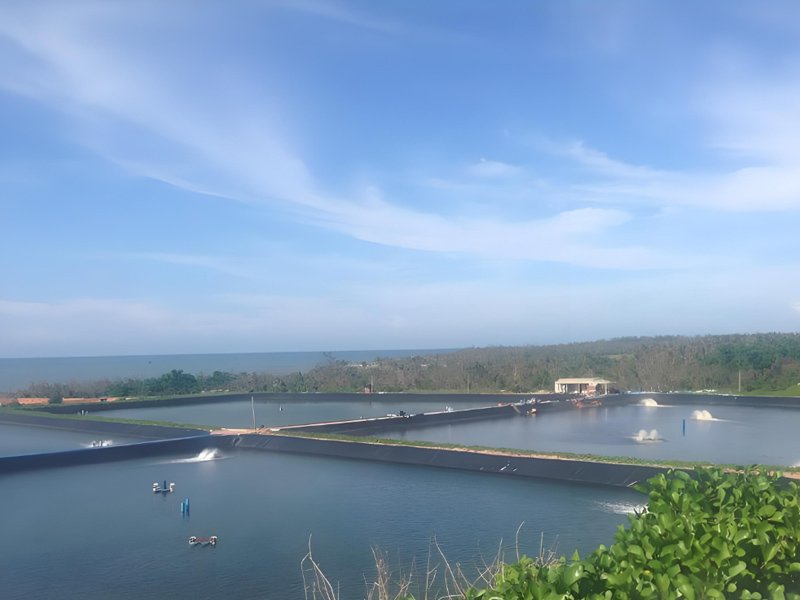
3. What Are Advantages of High Density Polyethylene Geomembrane?
Opting for a high density polyethylene geomembrane yields significant benefits, making it a top pick among geomembrane manufacturers and engineers globally.
3.1 Superior Durability
With 640 N puncture resistance and 27 kN/m tensile strength, a high density polyethylene geomembrane endures harsh conditions for 20–50 years. This durability cuts replacement costs by $50,000–$100,000 over decades (industry estimates).
3.2 Chemical and UV Resistance
Resistant to acids, alkalis, and UV exposure (90% retention after 1,500 hours, ASTM G154), it performs reliably in extreme climates—e.g., Thailand’s 2,500 sunshine hours/year—without cracking or degrading.
3.3 Cost-Effectiveness
At $0.50–$1.00/m², a high density polyethylene geomembrane reduces upfront costs by 20–30% compared to concrete ($2.00–$3.00/m²), with annual maintenance at $200–$500. Factory-welded seams minimize labor expenses.
3.4 Environmental Safety
NSF-61 certified options from a geomembrane factory prevent leaching, protecting aquatic life and groundwater—ideal for fish ponds and potable water reservoirs. Its recyclability aligns with sustainability goals.
Lorem ipsum dolor sit amet, consectetur adipiscing elit. Ut elit tellus, luctus nec ullamcorper mattis, pulvinar dapibus leo.
4. Main Considerations When Choosing the Best High Density Polyethylene Geomembrane
Selecting the optimal high density polyethylene geomembrane involves a detailed assessment of project-specific factors. Here’s how to make the right choice:
4.1 Project Size and Purpose
Small Ponds (100–1,000 m²)
- Specs: 0.5mm–0.75mm thickness, $0.50–$0.70/m².
- Use: Decorative ponds or small fish setups.
Medium Containments (1,000–10,000 m²)
- Specs: 1.0mm thickness, 7m x 100m rolls.
- Use: Aquaculture ponds or irrigation systems.
Large Systems (10,000+ m²)
- Specs: 1.5mm–2.0mm, 640 N resistance.
- Use: Landfills, mining tailings (BPM Sri Lanka case).
4.2 Material Properties
Thickness
- Range: 0.5mm (light duty) to 3.0mm (heavy duty) (Earthshields.com).
- Impact: Thicker liners (1.5mm+) resist higher pressures and punctures.
Surface Type
- Smooth: Cost-effective for flat bases, $0.05–$0.10/m² cheaper (BPM Geomembrane).
- Textured: 35° friction angle for slopes.
4.3 Environmental Conditions
UV Exposure
- Ensure 2–2.5% carbon black for 90% UV stability in sunny regions.
Chemical Exposure
- Verify pH 2–12 resistance for acidic soils or tailings.
Supplier Quality
Certifications
- Seek GRI-GM13, ISO 9001, and NSF-61 compliance from geomembranemanufacturers.
Experience
- Opt for a geomembranefactory with proven logistics—e.g., BPM’s 3–5-day delivery in ASEAN.
4.4 Installation Requirements
- Welding: Heat-welded seams (13 kN/m) require skilled labor.
- Support: Choose suppliers with training, reducing errors by 15–20%x`.

5. What Is the Life Expectancy of a High Density Polyethylene Geomembrane?
The life expectancy of a high density polyethylene geomembrane is a cornerstone of its value, impacting long-term planning and costs.
5.1 Lifespan Range
- Covered Applications: 36–50 years, e.g., buried landfill liners (Pond Informer, 2019).
- Exposed Applications: 20–30 years with UV stabilizers, extendable with cover.
5.2 Factors Affecting Longevity
UV Exposure
- Unprotected liners degrade after 1,500–2,000 hours in high-UV zones (ASTM G154). Soil cover ($0.10–$0.30/m²) boosts life by 20–30% .
Chemical Stress
- Neutral pH (5–9) yields 40+ years; acidic conditions (pH <5) reduce this by 5–10% (SGS testing).
Installation Quality
- Poor seams or punctures shorten life by 10–15%; professional welding (13 kN/m) maximizes durability.
Real-World Examples
- Aquaculture: A 0.75mm high density polyethylene geomembranein Mozambique lasted 25+ years.
- Landfills: Covered HDPE liners exceed 36 years in North America.
5.3 Maximizing Lifespan
Geotextile underlayment (300 g/m², $0.20–$0.50/m²) offers 90% puncture protection, while annual inspections maintain performance.
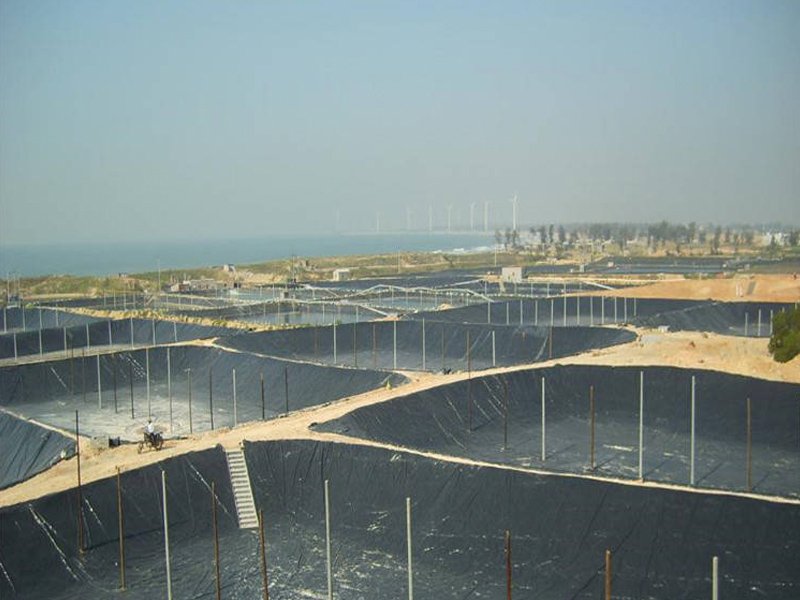
6. Final Thoughts
The high density polyethylene geomembrane is a containment titan, delivering unmatched durability (20–50 years), chemical resistance (pH 2–12), and affordability ($0.50–$1.00/m²). Sourced from geomembrane manufacturers like BPM or a geomembrane factory like Solmax, its specs—640 N puncture resistance, 27 kN/m tensile strength—excel in ponds, landfills, and industrial systems. Its 98% impermeability and NSF-61 certification ensure environmental and aquatic safety, making it a top-tier choice.
Choosing the right high density polyethylene geomembrane depends on project scale (1,000 m² vs. 30,000 m²), environmental factors (UV, chemicals), and installation precision. A 1.0mm liner suits medium ponds, while 2.0mm tackles heavy-duty needs. Partner with proven suppliers—BPM’s 15% error reduction highlights the value of expertise. Ready to fortify your containment? Contact a trusted geomembrane factory like BPM Geosynthetics for samples and quotes—your project deserves the reliability of a high density polyethylene geomembrane.

